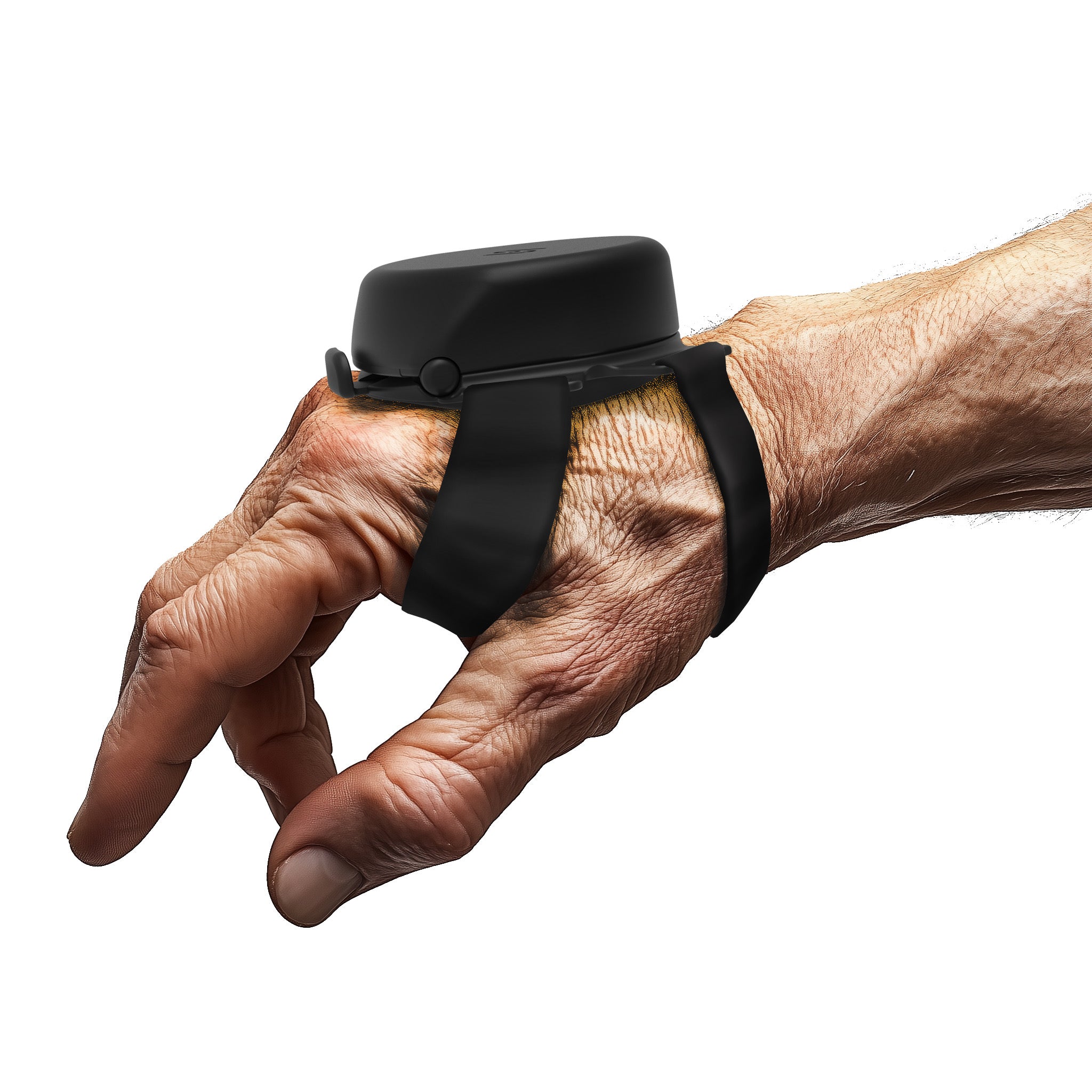Parkinson's disease is an ailment of the nerves and motor skills that gets worse gradually over time. Unfortunately, most individuals ignore early signs of Parkinson’s disease while early detection is essential.
This blog will discuss identifying these symptoms, examining what causes them to occur in the first place, differentiating between high-risk groups, and exploring ways in which a diagnosis of Parkinson’s may be made at an advanced stage.
How Is Parkinson's Diagnosed?
How is Parkinson's diagnosed? There is no single test that can definitively confirm Parkinson's disease. Instead, diagnosis is based on clinical evaluations, medical history, and neurological examinations.
Early symptoms of Parkinson’s are often reviewed first before discussing other possible diagnoses. Doctors will also examine motor symptoms like tremors, rigidity, and decreased speed but may also pay attention to non-motor indicators including mood changes and sleep problems which do not show motor signs.
Imaging tests like CT scans or MRI may be used to exclude other disorders while DaTscan evaluates the dopamine system which is usually damaged during the early stages of Parkinson's disease. The diagnosis greatly depends on the clinical observation made by neurologists as they determine whether any of the early symptoms of Parkinson’s exist taking into account the complete medical history.
Identifying the Early Symptoms of Parkinson’s Disease
The difference brought about by recognizing the early symptoms of Parkinson’s in disease management may be significant. Sometimes they appear subtly, may resemble other conditions, and might just be attributed to aging. Among the most common early symptoms of Parkinson’s are slight tremors, stiffness, and changes in posture or balance that may occur within an individual’s body. A person may also notice that their handwriting has become smaller and more cramped, a condition known as micrographia.
Masked face is another early hallmark sign associated with Parkinson’s disease (PD). Learning how to perform simple things like buttoning one’s shirt can also be one of the initial signs indicating this disease. Often these symptoms are slow in progression thus making it difficult to define the onset of this ailment precisely. Intervening during these instances leads to early diagnosis hence improving the effectiveness of its treatment options.
Non-Motor Symptoms and Their Impact
Though motor difficulties are commonly related to early signs of Parkinson's disease, the non-motor symptoms could be more disturbing in some cases. Depression and anxiety, as well as sleep problems, tend to occur often at the beginning stages of this ailment. In addition, there might be cognitive changes such as poor concentration or judgment.
For this reason, these non-motor symptoms function as important clues for identifying the disease early enough. This can lead to individuals getting treatment even before they develop any serious complications by recognizing these non-motor early symptoms of Parkinson’s disease and seeking medical attention promptly.
The Role of Genetics in Parkinson's Disease
Genetics plays a significant role in the detection of early stages and signs of Parkinson's disease mainly among individuals who have the disease in their families. There are specific mutations that increase the chance of developing early symptoms of Parkinson’s disease. Studies show that nearly 10-15% of cases of Parkinsonism are hereditary.
Through this information, it is possible for those who have a chance to get it to monitor their bodies to know if they are displaying any initial signs or symptoms at all and take some preventive steps. Genetic counseling goes beyond explaining biology into matters like self-perception and coming to terms with oneself among other issues surrounding personal development while growing up.
Emerging Therapies for Early Parkinson’s Symptoms
While the methods of initiation of Parkinson’s symptoms are still under investigation, they have been a subject of intense interest among researchers that has led to the emergence of novel therapies that hold promise for people who are in their early stages of the disease. For instance, gene therapy is being explored as one among other new ways to slow down the progression of initial Parkinson’s signs.
Medication targeting non-motor symptoms has advanced making it possible for those who experience cognitive and emotional challenges during early onset Parkinson’s disease to manage these problems better. Together with conventional approaches such as physiotherapy and assistive devices like Steadi-Two glove, these novel therapies have created more avenues through which individuals suffering from the initial stage of development of Parkinson’s may overcome their conditions and lead an improved quality of life.
The Braak Hypothesis: How Parkinson's Disease Begins
The widely accepted theory regarding early symptoms of Parkinson’s disease is Braak's hypothesis, which postulates that the disorder originates in the nervous system and then moves towards the brain. Early Parkinson’s symptoms may start in the GI tract where alpha-synuclein proteins begin to unfold abnormally leading to a domino effect resulting in damage to cells within the central nervous system. This might explain why some people suffering from initial signs of Parkinson’s also report having an upset stomach or lack of smell well ahead of any other noticeable motor impairment.
Braak’s hypothesis provides insights into the non-motor symptoms preceding the onset of physical manifestations of PD. Clinicians and research scientists need to understand this progression since it enables them to focus on early diagnostic strategies that go beyond simply examining movement activities. If physicians recognize these early indicators associated with PD, they can offer their patients more holistic treatments at its onset.
Populations at Risk for Early Parkinson's Symptoms
Parkinson’s disease can present itself through early signs in everyone; nonetheless, some groups are better positioned than others. Aging is its foremost determining factor; most diagnoses are made on people above sixty years old. Yet still, younger individuals sometimes have Parkinson’s symptoms early on in life; hence this type of ailment is sometimes referred to as Early Onset Parkinson’s. Moreover, inheritance also contributes; patients whose parental line suffers from Parkinson’s might experience its symptoms beforehand.
Some environmental conditions such as the use of agrochemicals and lead poisoning raise the possibility of people having early-onset Parkinson’s disease. In addition, certain occupations that expose employees to toxins may predispose them to experiencing initial symptoms of the disease. Realizing these vulnerable groups is important for preventive assessment and timely treatment.
How Steadiwear Supports Parkinson's Patients

People with early-stage Parkinson's disease prioritize controlling the progress of their illness. Tremors are one of the most frequent and difficult symptoms of Parkinson’s disease, which can be attributed to an innovative solution. Our Steadi-Two glove is designed to stabilize hand tremors and thus enhance the quality of life for those who exhibit early signs of Parkinson’s.
The device we made counters gloved patients’ hand tremors by making use of smart technologies to give them a chance to do chores that otherwise would have been impossible because of the early onset of this disease.
Our glove reduces tremors so that individuals can remain independent and self-assured. When used alongside other initial treatments, this approach can substantially improve living with Parkinson especially if symptoms are recognized early on.
Conclusion
In managing the progression of Parkinson's disease, detecting Parkinson's early symptoms as soon as possible is crucial. Early symptoms of Parkinson’s, ranging from subtle motor signs like tremors to non-motor indicators such as loss of taste, can often be overlooked or misinterpreted. However, recognizing these signs early opens the door to more effective treatment options, allowing for better management of the disease's progression. Early intervention can significantly improve outcomes, giving patients a greater opportunity to maintain their quality of life and independence for a longer period.
Knowing the risks and reasons behind early symptoms of Parkinson’s disease especially those suggested by Braak’s hypothesis can help in focused care for those at risk.
Patients who know about the first signs of Parkinson's and also look for possible ways to treat them will be able to deal effectively with complications associated with it. With all this research being carried out, there is still a glimmer of hope for better outcomes on how those affected by early signs of Parkinson’s are treated.



